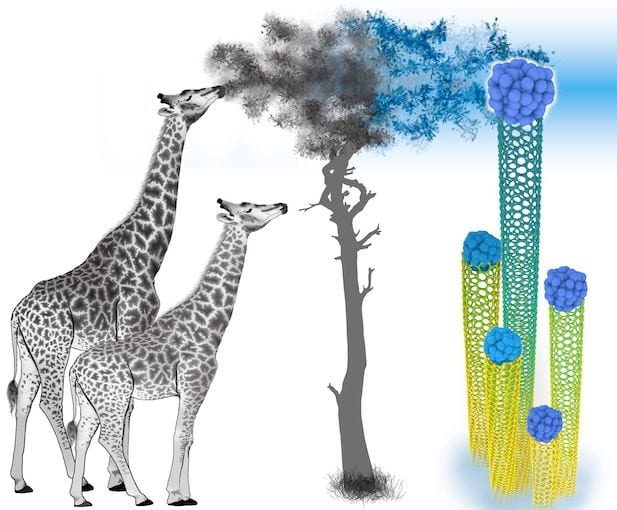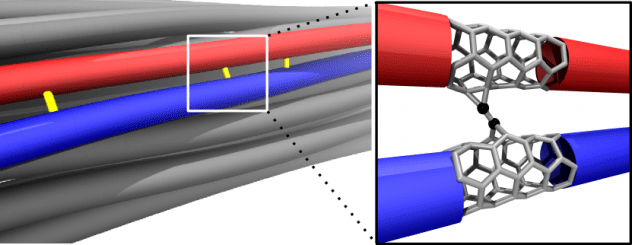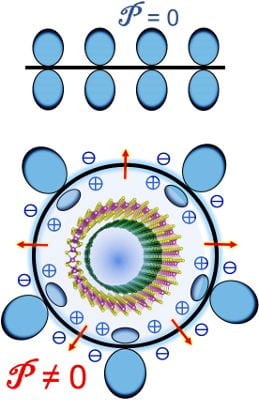Rice theorists show how tight “diet” could produce single-chirality carbon nanotubes
 Like a giraffe stretching for leaves on a tall tree, making carbon nanotubes reach for food as they grow may lead to a long-sought breakthrough.
Like a giraffe stretching for leaves on a tall tree, making carbon nanotubes reach for food as they grow may lead to a long-sought breakthrough.
Materials theorists Boris Yakobson and Ksenia Bets at Rice University’s George R. Brown School of Engineering show how putting constraints on growing nanotubes could facilitate a “holy grail” of growing batches with a single desired chirality.
Their paper in Science Advances describes a strategy by which constraining the carbon feedstock in a furnace would help control the “kite” growth of nanotubes. In this method, the nanotube begins to form at the metal catalyst on a substrate, but lifts the catalyst as it grows, resembling a kite on a string.
Carbon nanotube walls are basically graphene, its hexagonal lattice of atoms rolled into a tube. Chirality refers to how the hexagons are angled within the lattice, between 0 and 30 degrees. That determines whether the nanotubes are metallic or semiconductors. The ability to grow long nanotubes in a single chirality could, for instance, enable the manufacture of highly conductive nanotube fibers or semiconductor channels of transistors.
– See more at Rice News


 Up here in the macro world, we all feel fatigue now and then. It’s the same for bundles of
Up here in the macro world, we all feel fatigue now and then. It’s the same for bundles of  Carbon nanotube fibers are not nearly as strong as the nanotubes they contain, but Rice University researchers are working to close the gap.
Carbon nanotube fibers are not nearly as strong as the nanotubes they contain, but Rice University researchers are working to close the gap.
 One nanotube could be great for electronics applications, but there’s new evidence that two could be tops.
One nanotube could be great for electronics applications, but there’s new evidence that two could be tops.